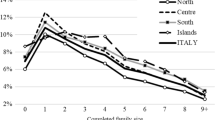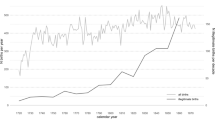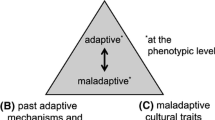Abstract
A series of computer-simulation models relating mortality level to fertility behavior and to rates of natural increase assuming that couples made use of a perfect means of birth control, that they wanted to be highly certain of having at least one son survive to the father’s 65th birthday, and that all women were biologically capable of having the same number of children were reported earlier. A model identical to one presented earlier but assuming women to be of variable fecundity is presented here; the results are quite similar. Also, the results of models assuming that parents want to be highly certain of at least two surviving children regardless of sex are compared with models assuming parental desire to be highly certain of at least one surviving son. At high levels of mortality the rates of natural increase are quite similar. When mortality is at intermediate to medium-low levels, the two-surviving-children model shows a lower rate of natural increase than the surviving-son model. At very low levels of mortality, such as now experienced by the most advanced nations, the two-surviving-children model manifests a higher rate of natural increase than the surviving-son model.
Similar content being viewed by others
References
Eliot, Johan W. 1968. Urban-rural and Berber-Arab differentials in desired numbers of male children and related factors in Algeria, Paper presented at annual meeting of the Population Association of America.
Hassan, Shafick S. 1967. Religion versus child mortality as a cause of differential fertility. Paper presented at annual meeting of the Population Association of America.
Heer, David M., and Dean O. Smith. 1968. Mortality level, desired family size, and population increase. Demography 5: 104–121.
Immerwahr, George E. 1967. Survivorship of sons under conditions of improving mortality. Demography 4: 710–720.
Kapadia, K. M. 1966. Marriage and Family in India. Third edition. London: Oxford University Press.
Ministry of Health and Social Affairs, Republic of Korea. 1965. The Findings of the National Survey on Family Planning, 1965. Seoul: Planned Parenthood Federation of Korea.
Poffenberger, Thomas. 1967. Age of wives and number of living children of a sample of men who had the vasectomy in Meerut District, U.P. The Journal of Family Welfare 13: 48–51.
Prabhu, Pandarinath H. 1963. Hindu Social Organization. Fourth edition. Bombay: Popular Prakashan.
Rizk, Hanna, 1959. Fertility Patterns in Selected Areas in Egypt. Unpublished Ph.D. dissertation, Princeton University.
Sheps, Mindel C. 1965. An analysis of reproductive patterns in an American isolate. Population Studies 19: 65–80.
United Nations. 1956. Methods for Population Projections by Sex and Age, Population Studies, No. 25. New York: United Nations.
Williamson, Nancy E. 1968. Son preference around the world. Unpublished paper available at the Library of the Harvard Center for Population Studies.
Yaukey, David. 1961. Fertility Differences in a Modernizing Country. Princeton, N. J.: Princeton University Press.
Author information
Authors and Affiliations
Rights and permissions
About this article
Cite this article
Heer, D.M., Smith, D.O. Mortality level, desired family size and population increase: Further variations on a basic model. Demography 6, 141–149 (1969). https://doi.org/10.2307/2060388
Issue Date:
DOI: https://doi.org/10.2307/2060388




